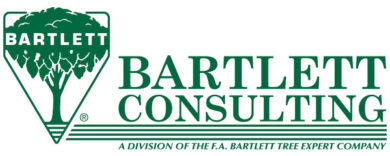How battery-operated irrigation controllers are saving the day
They’re more common than you may think. We see them in operation on sites like street medians, landscaped roadsides and construction sites without easy access to electrical power, as well as within public landscapes where vandalism is a concern. And, for the most part, we don’t give them a second thought. But the truth is that battery-operated controllers have been helping irrigate a broad range of sites for over 17 years. According to Rengan Rajendran, product manager for Rain Bird commercial controllers, these handy little devices have a history of saving the day for sites that, for one reason or another, are unable to use standard irrigation controllers.
“Battery-operated controllers can provide a much-needed option at sites when there’s no AC power available,” Rajendran said. “They can be used permanently or temporarily depending upon the situation. For example, a contractor may want to expand an existing site, but there’s no controller wiring to add a new valve. Or, perhaps a site is still under construction, and the electricity hasn’t been hooked up. There are also sites that prefer to use battery-operated controllers because a standard controller could be damaged by vandalism or flooding.”
Temporary or permanent irrigation
Before the advent of battery-operated controllers, managing irrigation at these vandal-prone, flood-prone or “electrically challenged” sites was both tedious and time-consuming. In some situations, property owners or managers would try to rely solely on hand-watering with hoses or using manually operated sprinklers. Certainly, these are not ideal options, particularly in public areas with high levels of pedestrian traffic. At sites with an irrigation system installed—but no electronic controller—a contractor or grounds manager often had to travel to the site and manually turn irrigation on at the valve. This led to a scenario ripe with the potential for human error. Jan Staszewski, urban forester for the City of Salem, Ore., experienced that problem firsthand.
“Throughout our parks system, we have 50 sites with irrigation managed by Rain Bird’s Maxicom2 central control system,” Staszewski explained. “We also have other irrigation sites that we haven’t connected to our central control for one reason or another. In the past, one of our guys turned on irrigation at a site and unintentionally left it running for two or more hours. It’s easy to get busy doing something else and forget to return to the site and turn the water off. Obviously, that can waste a lot of water.”
Staszewski and his colleagues turned to Rain Bird’s latest battery-operated controller, the TBOS-II, to manage irrigation at a five-acre rhododendron garden located within a section of a large park that wasn’t otherwise irrigated. “We’re primarily using the system to establish the garden, so it’s not a permanent situation,” Staszewski said. “We needed something that we could easily adjust to suit the needs of different plants. We also needed something that we could hide fairly well, because this garden is located in a park with 24-hour public access. We were able to program the TBOS-II with a starting schedule and then leave it inside one of the irrigation valve boxes where only our employees could access it. It’s really worked well for us so far.”
Jeff Sergei, irrigation manager for Evergreen Landscape and Sprinkler Company in Fort Collins, Co., found battery-operated control just the right fit for one of his clients. Harmony Markets, a commercial retail shopping center, had an irrigation system consisting of nine rotor zones. During the construction phase of a recent expansion, field wires running from the irrigation controller to the valves were destroyed. Restoring the wires was cost-prohibitive. Sergei installed Rain Bird’s TBOS-II at Harmony Markets to provide a permanent irrigation control solution for its surrounding greenspaces. “With a robust control module and tight construction, it looks as if water will not penetrate into the module,” Sergei said. “Plus, its advanced programming features will help us save water and money. It’s been a real life-saver for us.”
How they work
Battery-operated controllers generally consist of a controller powered by a battery that must be replaced annually. The controller connects to a potted latching solenoid located inside a valve box. Both the controller and its battery are tightly sealed to prevent problems should water enter the valve box at any time. Users can choose from different controller models based upon the number of zones they need to irrigate. Some controllers have a rudimentary built-in user interface for programming and scheduling, while others feature a hand-held device with more robust programming features. After a controller is programmed, it retains its new schedule and operates the valve accordingly.
While most of today’s battery-operated controllers are based upon the same basic design principles, they’re certainly not all created equal. There are many different brands and models available on the market depending up on a site’s needs. “The battery-operated controllers available today range from simpler contractor-level versions for residential use to commercial-type controllers more appropriate for larger sites like parks or shopping malls,” Rain Bird’s Rajendran said. “The pricing of the contractor-level battery-operated controllers is similar to comparable AC-powered versions—around $150. Higher-end battery-operated controllers used for commercial sites tend to be on the lower end of the commercial controller price, somewhere in the $200-$300 range. Either way, when you factor in the amount of time and water that you can save by implementing one of these controllers rather than manually managing irrigation, they can pay for themselves pretty quickly.”
Battery-operated irrigation controllers can be beneficial in many areas, including medians.Improving irrigation efficiency
Most battery-operated controllers offer the same basic features as comparable standard AC-powered controllers. Users can set days and times to water, which stations to water and how long to water them. Some offer multiple program options so that it’s possible to have one program that waters the grass and another that waters shrubs. They also typically allow users to choose from multiple watering start times. “The benefit of that is that if you’re on a slope or dealing with compacted soil, you can irrigate for maybe ten minutes, stop and then irrigate another ten minutes so you don’t get runoff,” Rajendran explained.
While those features are fairly universal to most brands, some manufacturers have made a number of substantial improvements to their commercial-level battery-operated controllers over the years. “When we were updating the original TBOS controller—which became the new TBOS-II—we used customer feedback that we’d accumulated over the past ten years to decide what new features to integrate,” Rajendran said. “When it came to improving ease of use, we sought input from focus groups. We found out that people struggled when using our old icon-based interface. Our research determined that people really prefer to read words that tell them what to do. So, we changed the interface to implement menus in various languages so the device can still be used internationally.”
With so much additional focus today on water efficiency and management, manufacturers are also integrating more water-smart features into their battery-operated controllers. For example, Rain Bird’s TBOS-II now offers a monthly seasonal adjust feature that allows users to adjust water schedules by a percentage depending on the watering needs typical to that time of the year. For example, during the hottest months, a user may choose to adjust watering up to 150 or 200 percent of the base schedule or scale down to 40 or 50 percent in cooler, wetter months. “As of now, battery-operated controllers can’t calculate actual ET (evapotranspiration) rates,” Rajendran said. “To do so, a controller would have to constantly receive both real-time and historical weather data, and battery-operated controllers simply don’t have the battery life to do that. So, to conserve energy, we integrated the ability to make monthly seasonal adjustments. You can set up a schedule for an entire year in advance, which saves time and labor because you don’t have to keep returning to the site to adjust your watering schedule.”
New landscapes often need more water to become established. In this situation, irrigation professionals can set up an initial program that waters more often, as well as a “Contractor Default” schedule. The irrigation manager can choose to run the initial program for a certain number of weeks and then have the controller automatically switch over to the Contractor Default setting. “This eliminates the possibility of accidentally running the initial program past a certain date simply because you forgot to go back and reduce the watering schedule,” Rajendran explained.
Saving time is certainly important as well. New options like the ability to name each zone on the battery-operated controller (e.g. “Front Commons Area,” “Shrubs,” “Sidewalk Strip,” etc.) make adjusting schedules faster and easier. Controllers that offer the ability to create program templates help contractors and irrigation managers create watering schedules that can be easily transferred to new controllers as they’re installed.
The future
With irrigation technology constantly changing and evolving, what’s the outlook for these battery-operated devices? Both domestically and internationally, battery-operated controllers can play a major role in a number of retrofit applications. “I think the market will increase due to the number of existing systems that need to be updated,” Rajendran said. “There are many countries that deal with inconsistent electrical power, like India. Power goes out there all the time, and it’s a real issue. In a lot of these emerging countries where the power is often down for two or three hours each day, a battery-operated controller offers a better solution. Many sites run into the issue of needing to add an irrigation zone, but they don’t have another zone available on their current controller. Domestically, there’s also a solid need to simplify system expansions and provide more consistent irrigation at remote sites. While they can’t yet use real-time ET data, battery-operated controllers have improved to the point that they can do just about everything else a regular controller can do.”
Article provided by Rain Bird Corporation.


